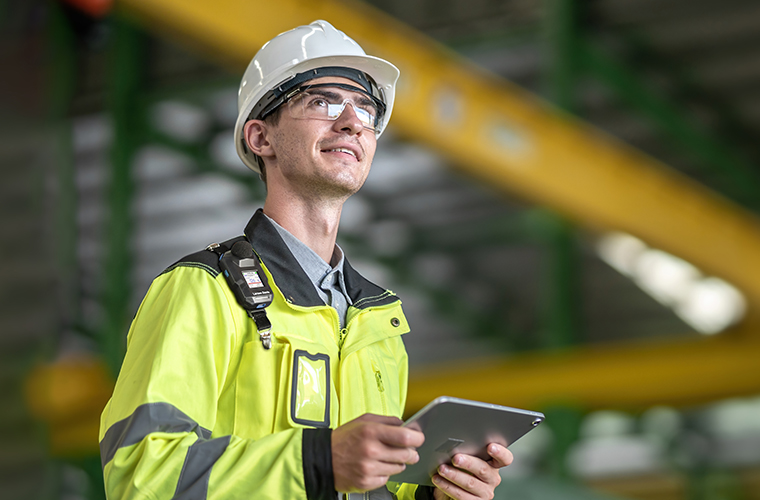 Industrial Hygienists and Occupational Safety Professionals have to understand all kinds of workplace hazards, not just noise. They still understand that the need to ensure workers are not being exposed to dangerous levels of noise is critical, from both a legal and an ethical perspective. In order to manage the workload efficiently, look for noise dosimeters that support quick and efficient deployment with the ability to easily produce results on a single page report. What else should you look for when selecting a noise dosimeter?
Industrial Hygienists and Occupational Safety Professionals have to understand all kinds of workplace hazards, not just noise. They still understand that the need to ensure workers are not being exposed to dangerous levels of noise is critical, from both a legal and an ethical perspective. In order to manage the workload efficiently, look for noise dosimeters that support quick and efficient deployment with the ability to easily produce results on a single page report. What else should you look for when selecting a noise dosimeter?
We recommend you evaluate your options using the following categories
Ease of Deployment
- Most modern noise dosimeters offer wireless operation in order to be as unobtrusive as possible for the user. Look for a lightweight model with a simple system to clip the device to a workers’ clothing near to the ear.
- Does the meter offer a simple user interface via a mobile app? How easy is it to create a measurement setup?
- Some noise dosimeters even offer wireless charging, allowing you to put the meter on a charging pad built right into the case.
Ease of Setup for Multiple Meters
- If you are deploying multiple meters at once, the ability to push a common setup to multiple meters at the same time ensures you are taking consistent data from subject to subject.
Ease of Data Collection
- Look for a model that automatically downloads data to your phone or laptop when the device is in Bluetooth range.
Ease of Calibration
- It is important to field calibrate (a simple, one-point calibration check) before and after measurements. Look for a meter that is supplied with a calibrator and offers simple, automatic calibration when the device detects a calibrator
signal and includes calibration information in the results data file.
Confidence in Your Data
- You want to get the right data the first time around and be sure that the measurement isn’t tampered with, whether on purpose or inadvertently. Features like audio recording and motion detection can help.
- Audio recording allows you to verify that the noise levels experienced are those of a typical workday, and not from something like the measurement subject talking into the microphone or from a one-off event. Listening to sound recordings
that are automatically captured during loud events can help you identify sound sources. Learn more about Audio in Noise Dosimetry
- Bump and motion detection lets you know whether or not the meter was actually worn all day and can also automatically exclude irrelevant noise that might occur if the microphone itself is bumped. Learn more about Motion Detection
in Noise Dosimetry.
Available Octave Band Data
- 1/1 Octave band data is useful in helping to select appropriate mitigation techniques and PPE. Consider looking for a device that offers octave band analysis as an option.
Ease of Data Viewing and Reporting
- Is the percent noise dose easy to view, both on the meter itself and via a nearby Bluetooth-connected mobile device? Can you set up alerts and alarms when the dose reaches a user-defined level?
- Look for a dosimeter with software included to send reports right from your mobile device with minimal post-processing.
Special Considerations
- Are you measuring personal noise exposure in a mine, petrochemical plant, or other environment that requires intrinsically safe equipment? Look for a meter that has the appropriate intrinsic safety rating.
- If your measurements take place in an environment in which Bluetooth is prohibited due to security, you will need a device that offers a “no Bluetooth” option.
Measurement Confidence
- Was the internal microphone calibrated by the manufacturer? Does the manufacturer offer factory calibration services?
Software
- Is software (for both PCs and mobile devices) freely available?
Rental Available
- You may need dosimeters for a one-time or yearly test. Whether you need one dosimeter or many, look for dosimeters that can be rented for short-term use.
Larson Davis Spartan™ Noise Dosimeters Model 730 and Model 730IS meet these criteria. Want to learn more? Reach out to our team of experts, and we’ll be happy to help.
Learn more about Spartan Noise Dosimeters
 Industrial Hygienists and Occupational Safety Professionals have to understand all kinds of workplace hazards, not just noise. They still understand that the need to ensure workers are not being exposed to dangerous levels of noise is critical, from both a legal and an ethical perspective. In order to manage the workload efficiently, look for noise dosimeters that support quick and efficient deployment with the ability to easily produce results on a single page report. What else should you look for when selecting a noise dosimeter?
Industrial Hygienists and Occupational Safety Professionals have to understand all kinds of workplace hazards, not just noise. They still understand that the need to ensure workers are not being exposed to dangerous levels of noise is critical, from both a legal and an ethical perspective. In order to manage the workload efficiently, look for noise dosimeters that support quick and efficient deployment with the ability to easily produce results on a single page report. What else should you look for when selecting a noise dosimeter?